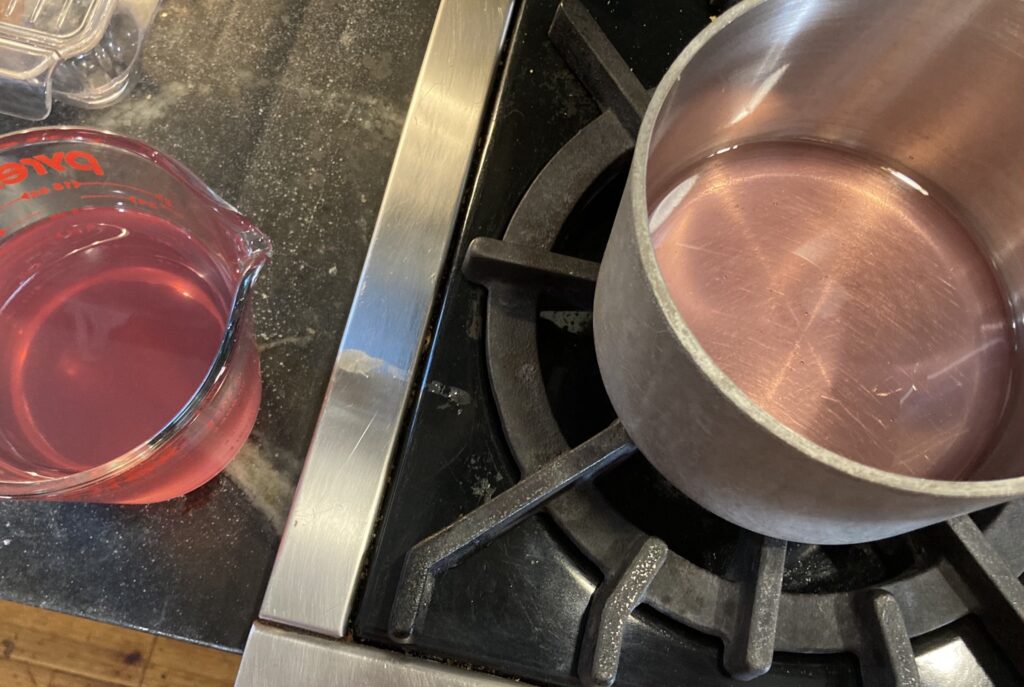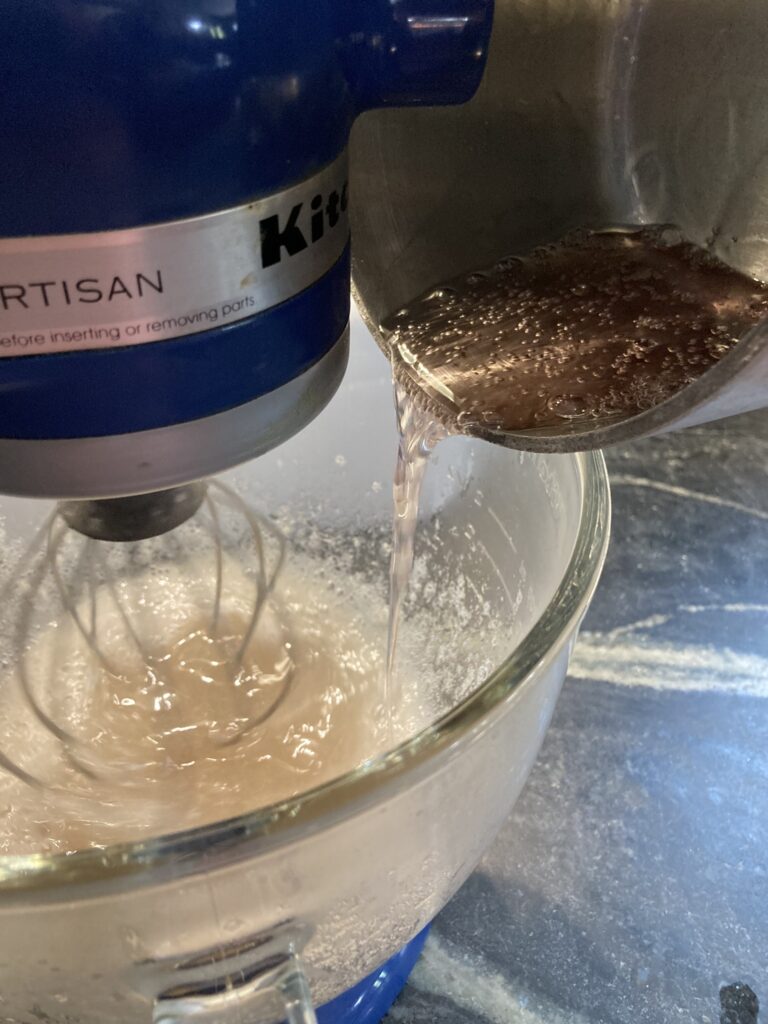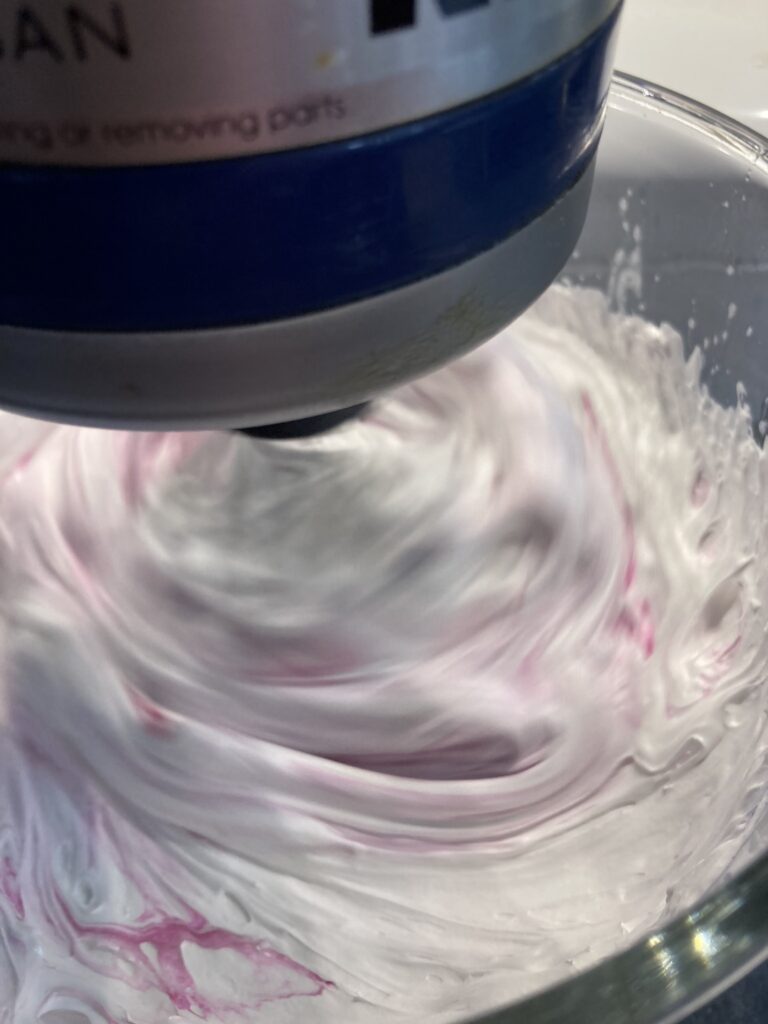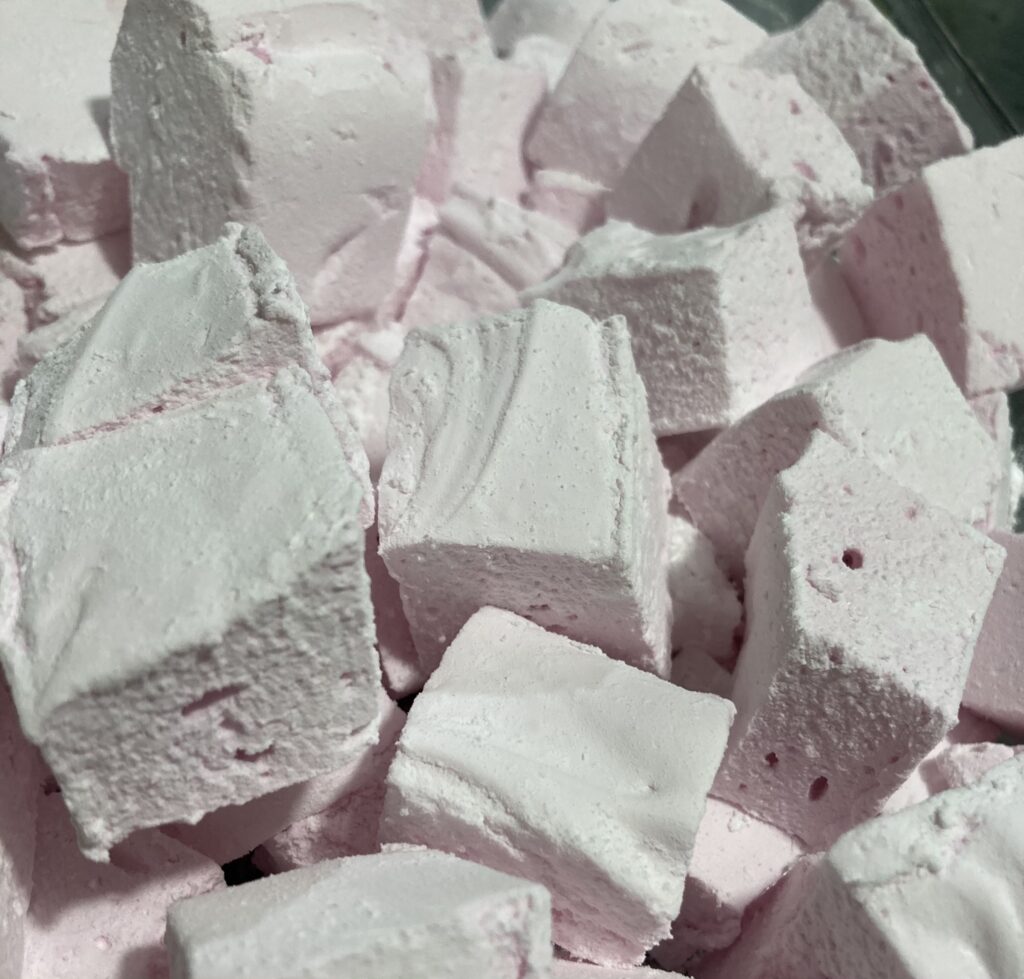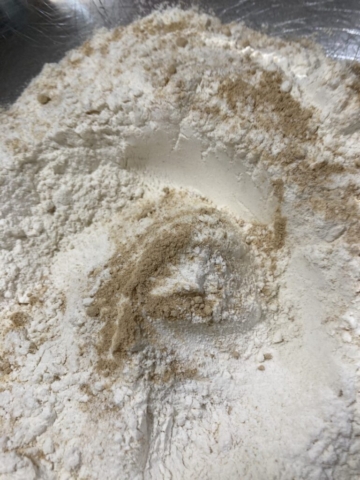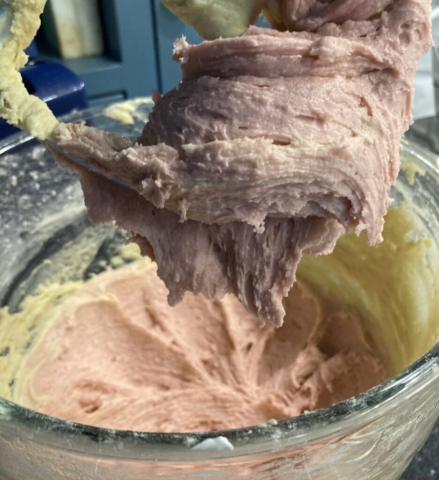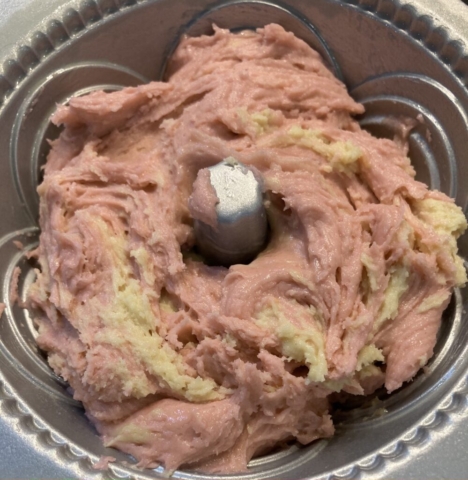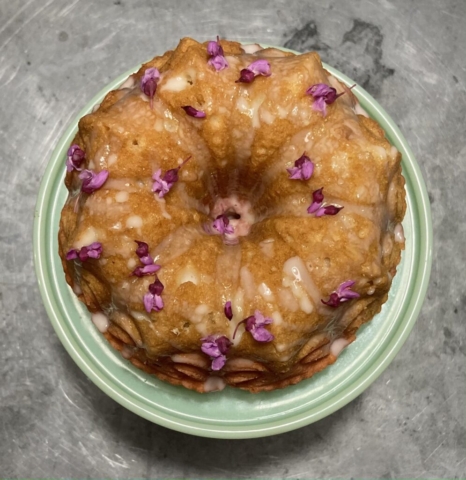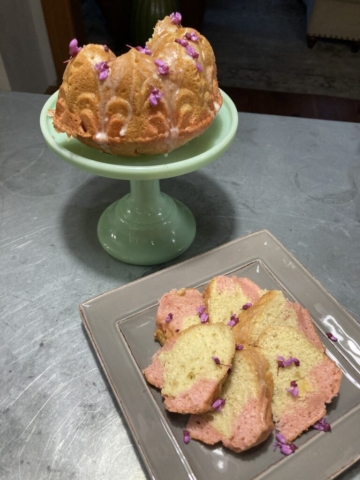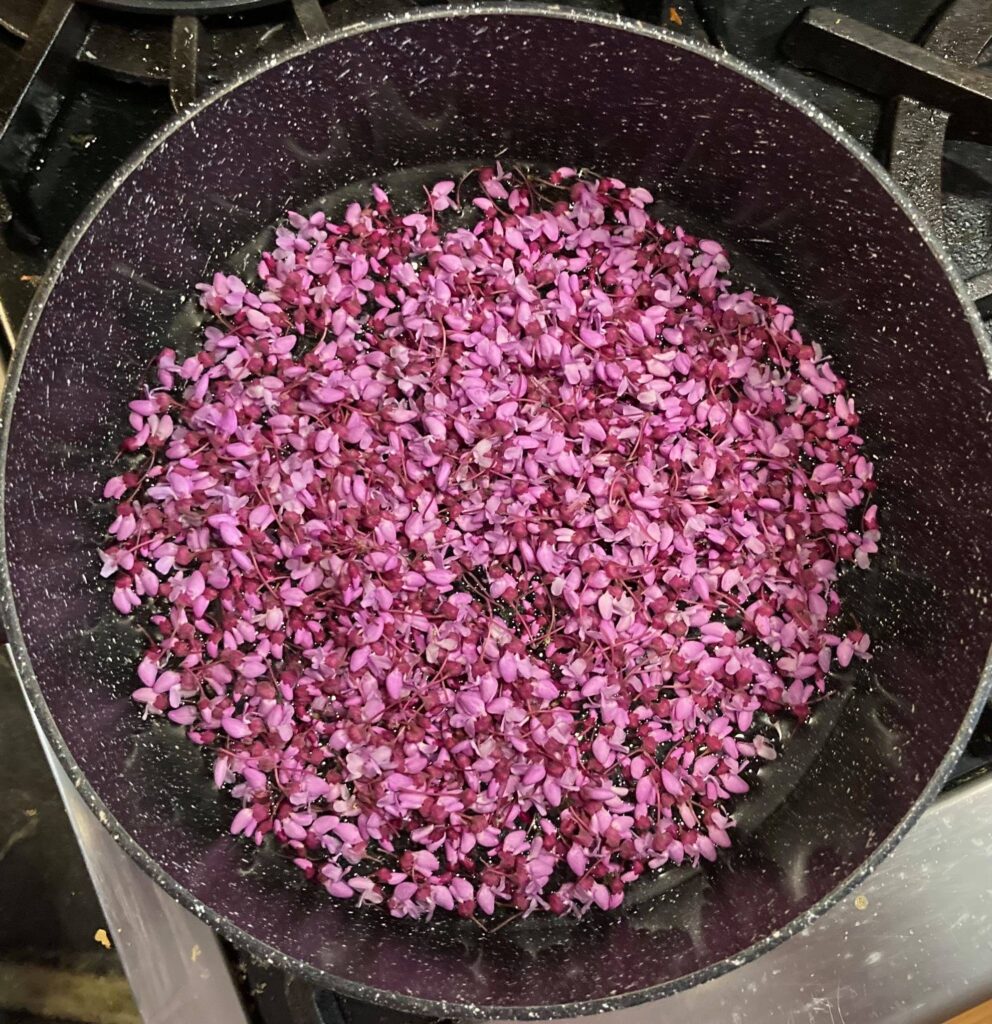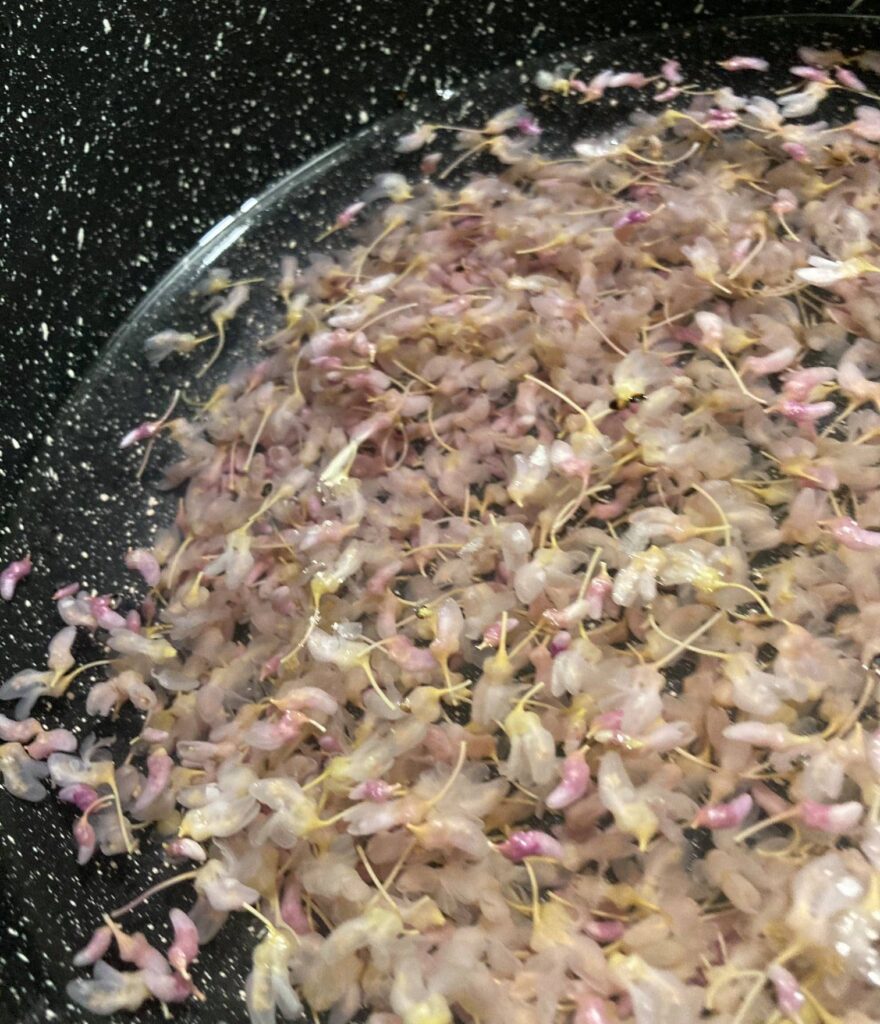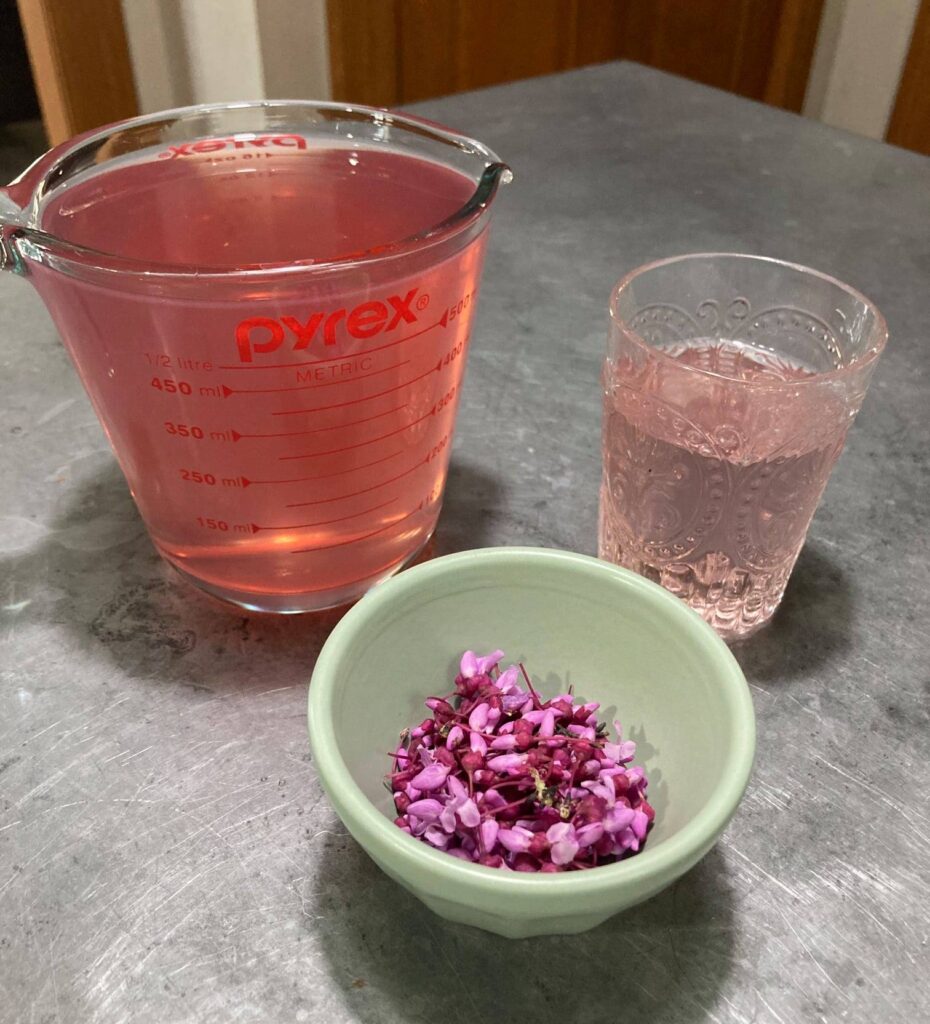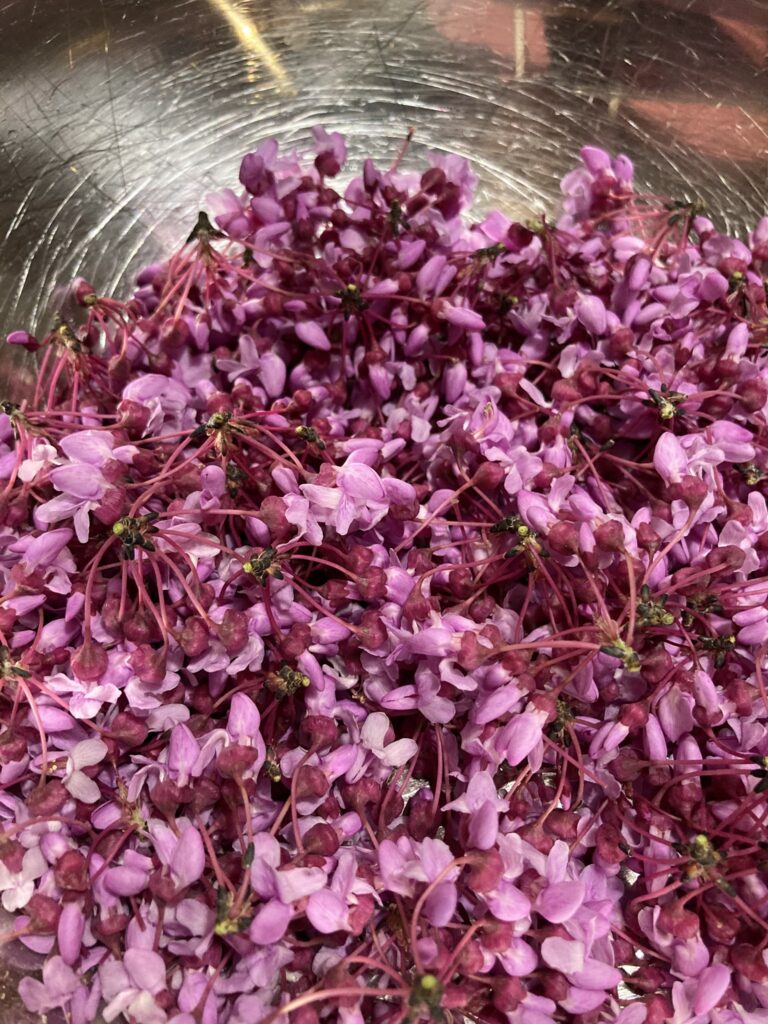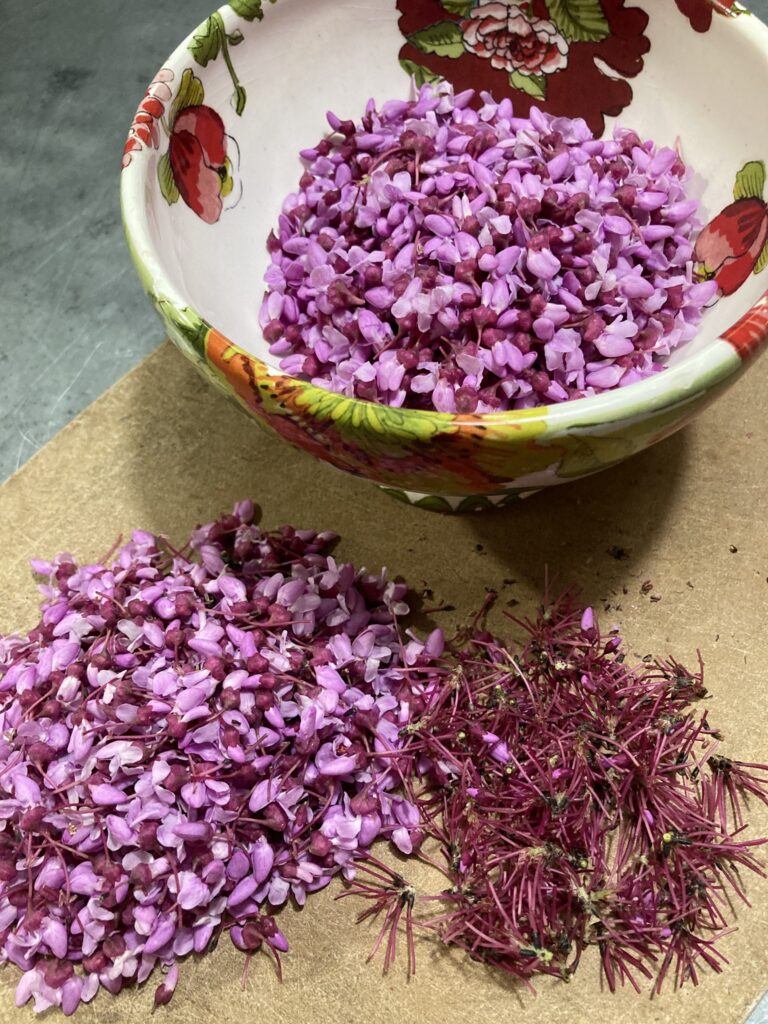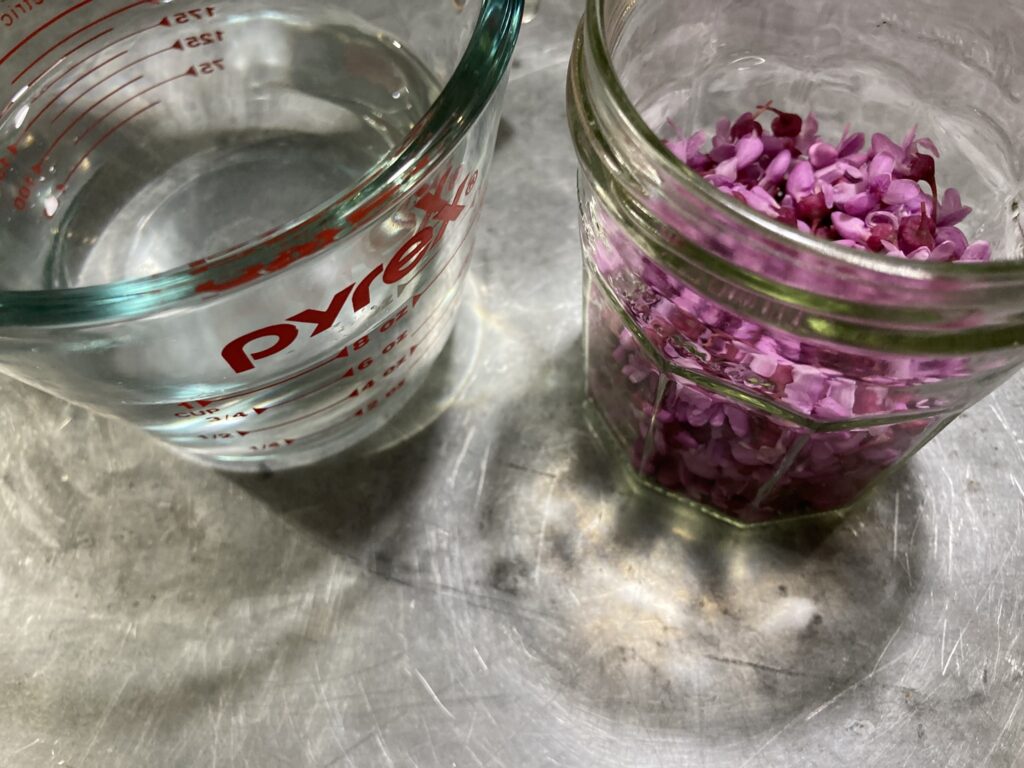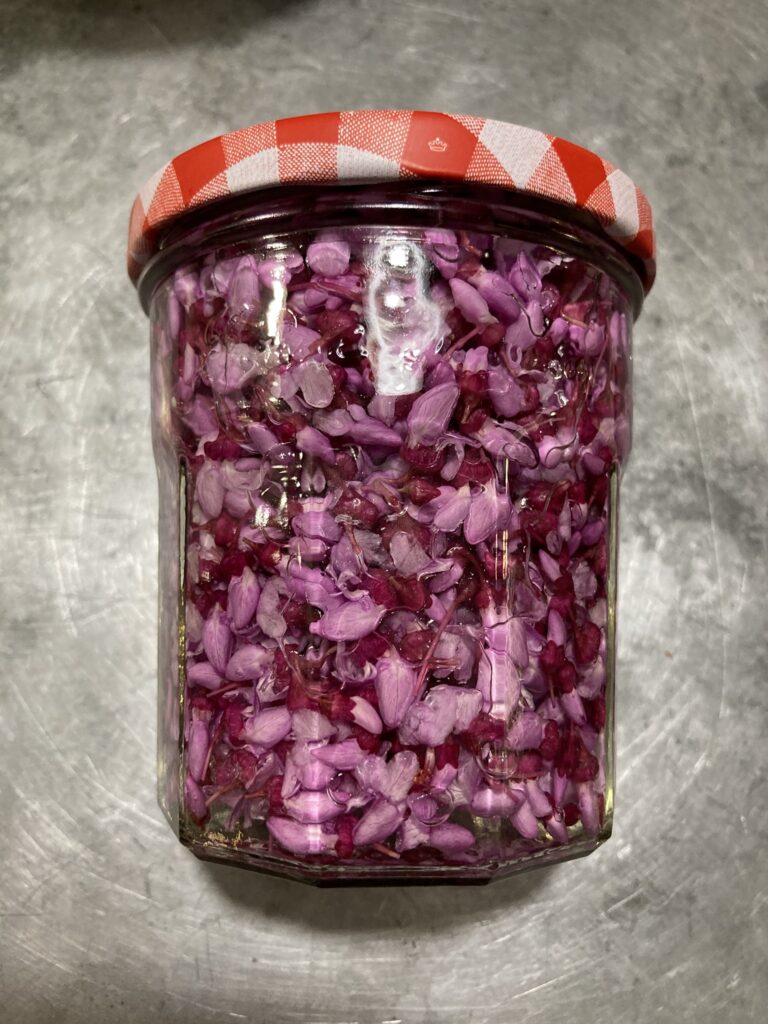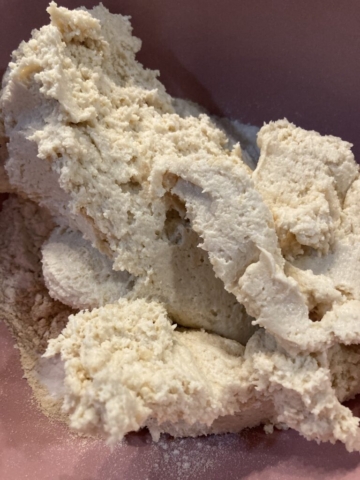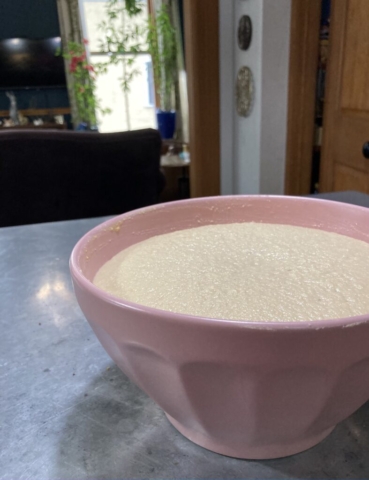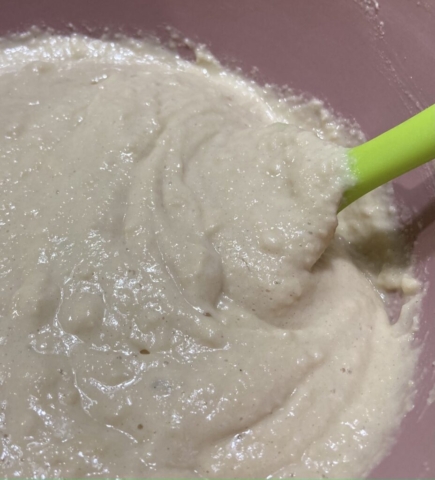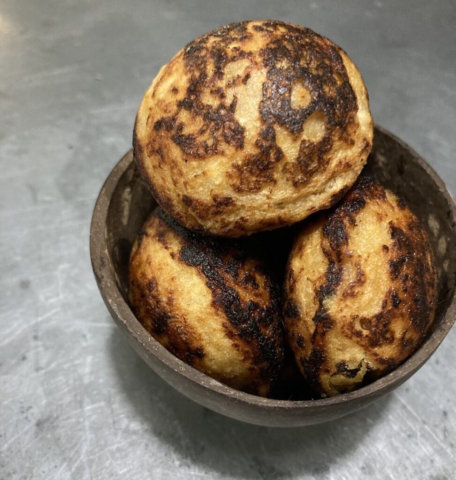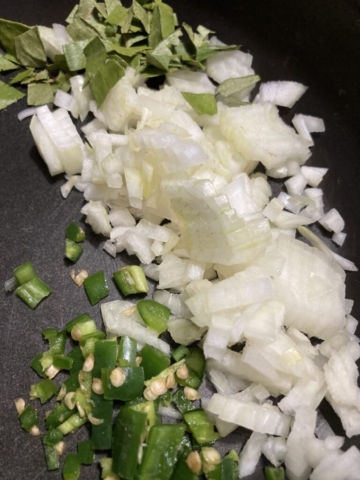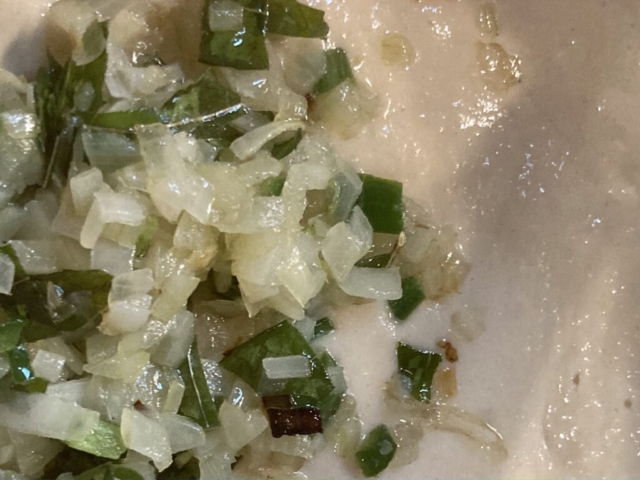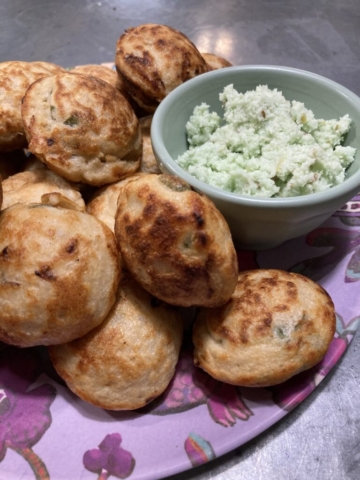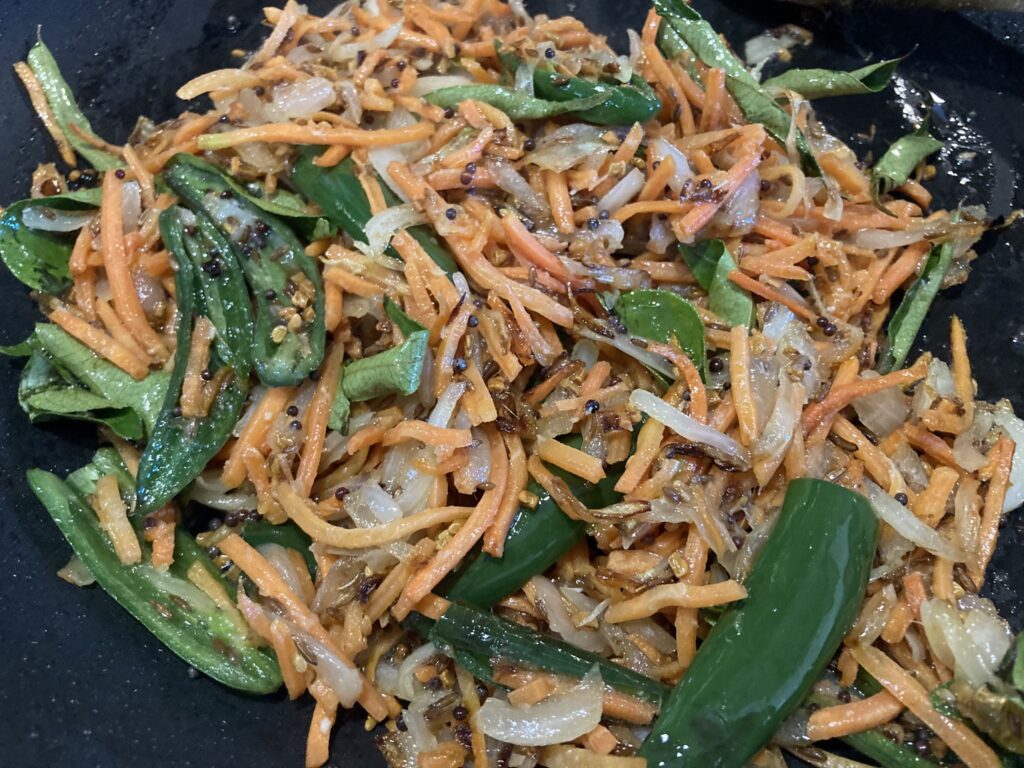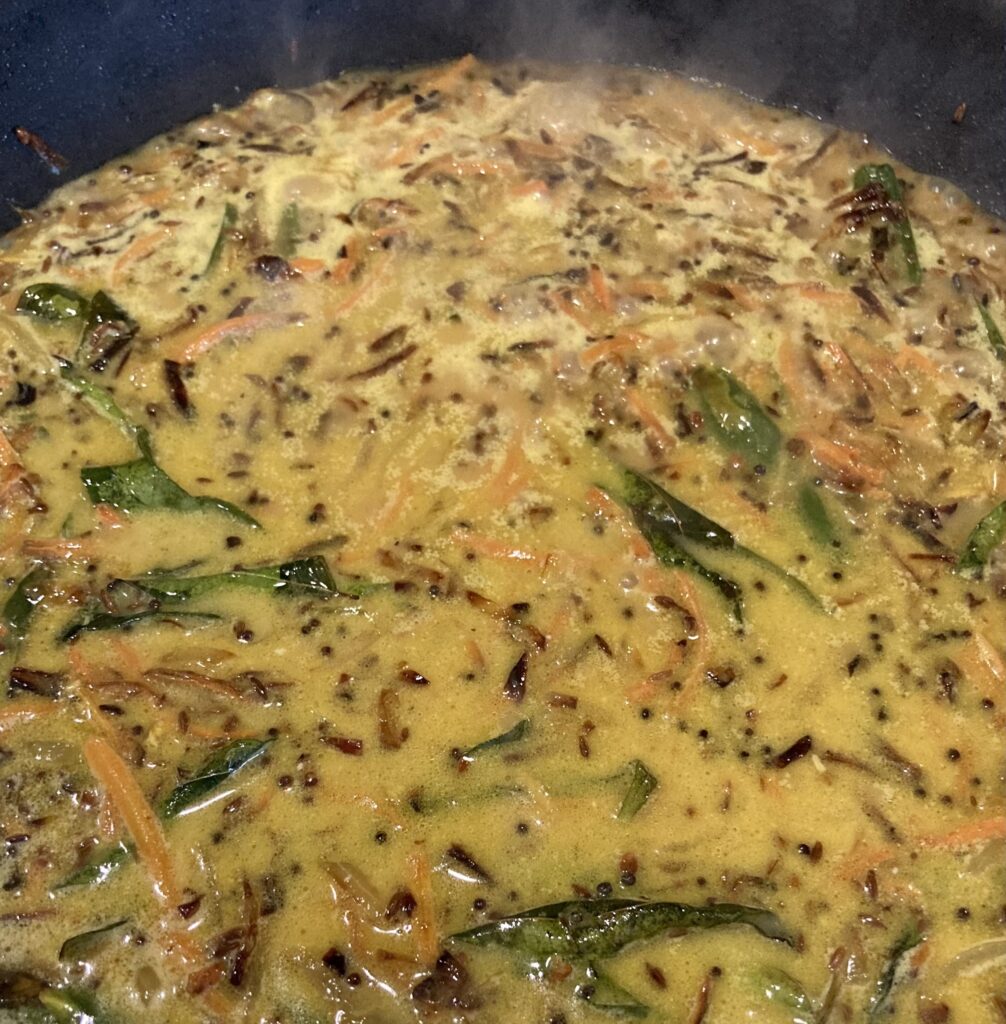Everything Is Better With Cashews?
Redbud Marshmallows, dipped in Citrus Chocolate
Redbud marshmallows on their own have a very sweet, floral flavor. They’re a little overwhelming for me straight up, but when paired with a citrus & white chocolate topping, the floral and tang balance beautifully.
butter (for greasing the pan)
sprinkles for decoration, optional
1. Add 1/2 c. water and gelatin to the bowl of stand mixer (whisk attachment). Stir briefly to combine.
(NOTE: If you don’t have a stand mixer, you can make marshmallows in a large bowl with a hand mixer — you just have to be willing to hold and beat it for 12 minutes. Prep the pan and spatula for the marshmallows ahead of time. Or you can even do them entirely by hand, as was traditional, if you have a strong arm!)
2. In a small saucepan (a bigger one will be heavy and hard to hold steadily at a later stage) combine water, granulated sugar, redbud syrup, and salt. Cover and cook over medium high heat for 4 minutes. Uncover and cook until the mixture reaches soft ball stage (240 degrees if you have a candy thermometer), approximately 8 minutes. Once the mixture reaches this temperature, immediately remove from heat; if it continues, it will swiftly turn into hard candy.
3. Turn mixer on low speed and, while running, slowly pour the sugar syrup down the side of the bowl into the gelatin mixture. (Be very careful with the sugar syrup, as it is scaldingly hot and will burn you badly if it gets on your skin.) Once you’ve added all of the syrup, increase the speed to high.
4. Continue to whip until the mixture becomes very thick and is lukewarm, approximately 12 minutes. The pink will turn white — add food coloring, if desired.
5. While it’s whipping, butter a large 9 x 12 pan and dust with powdered sugar. Prepare an oiled spatula.
6. Pour the mixture into the prepared pan, spreading it evenly (and swiftly) with an oiled spatula.
7. Dust the top with enough of the remaining powdered sugar to lightly cover. Reserve the rest for later. Allow the marshmallows to sit uncovered for at least 4 hours and up to overnight.
8. Turn onto a board, cut into squares and dust all sides of each marshmallow with the remaining powdered sugar, using additional if necessary. May be stored in an airtight container for up to 3 weeks, or frozen.
9. If dipping, melt white chocolate in microwave at half power for a few minutes, or over double-boiler, then stir in citric acid. (Alternately, you can use lemon extract + lemon oil for a similar effect.) Dip marshmallows and let dry on a sheet of parchment paper. Sprinkle edible decorations over top while chocolate is still wet.
NOTE: You *could* sprinkle edible redbud blossoms over the top, which would look very pretty, but I think the texture would be a little odd with the marshmallows, personally.
Redbud Syrup: https://serendibkitchen.com/2021/04/15/redbud-syrup/
I Really Like My New Quartet Bundt Pan
Nordicware is so good. It lets me make four cakes from a single recipe, which is perfect in this case because I’m keeping one, then freezing and shipping three to Interstellar tier Patreon recipients.
But generally, I think this is a nice option for when I feel like making a cake, but don’t want an entire cake sitting around for a while — I can wrap and freeze three of them, to pull out when we feel like cake. ![]() Bake once a month, cake at every Sunday dinner?
Bake once a month, cake at every Sunday dinner?
(Remember to use something like Baker’s Joy to make prep easy!)
Redbud & Ginger Marble Cake, with Lemon Icing
The delicate flavor of redbud syrup lends moist deliciousness to this classic pound cake. A little hint of ginger adds complexity, and a tangy lemon icing perfectly complements the slight floral tang of the redbud blossoms.
redbud blossoms for decorating
3/4 c. confectioner’s sugar
1. Preheat oven to 350 degrees.
2. Grease and flour a 10-inch bundt pan (or as in this case, four smaller bundt pans). (Baker’s Joy spray makes this easy.)
3. In a large bowl, sift together flour, ground ginger, baking powder, baking soda, salt. Set aside.
4. Beat butter in a separate bowl until light and creamy (about two minutes). Gradually add sugar until the mixture is light in color and texture (about three minutes), scraping down sides of the bowl if needed. Beat in one egg at a time.
5. At low speed, add flour mixture a cup or so at a time, alternating with the sour cream (or Greek yogurt).
6. Remove half of batter to prepared pan. Add a little pink food coloring to remaining batter and stir to combine. Spoon remaining batter into pan and swirl with a skewer or chopstick.
7. Bake the cake until a toothpick comes out clean (50-55 minutes for a regular bundt pan; reduce time for smaller cakes).
8. Cool in the pan on a rack for 10 minutes, then invert onto rack, with a baking sheet beneath to catch drippings. (A sheet of parchment paper under the rack makes clean-up easy.)
9. Poke holes in cake and slowly drizzle redbud syrup over the warm cake(s). Let soak in before re-applying.
10. While cake is cooling, make lemon icing — combine lemon juice and confectioner’s sugar.
11. When cake is completely cool, drizzle lemon icing over the top (or alternately, dust with confectioner’s sugar), and decorate with fresh redbud blossoms.
Redbud Syrup
This recipe uses roughly a 1:1 ratio to make a simple syrup out of redbud tea and sugar. The thin syrup is suitable for creating lovely spring drinks; the thicker syrup can be drizzled over pancakes or used to soak a pound cake. Redbud has a delicate floral flavor, so be careful not to overwhelm it with other ingredients.
a little lemon juice
1. Rinse blossoms. (Since you’ll be draining the blossoms, no need to go to a lot of effort to pick off stems.) In a medium pot on high heat, bring blossoms and water to a boil.
2. Remove from heat, cover, steep in fridge 6-8 hours or overnight. You’ve now made redbud tea.
3. Sieve flowers out and weigh redbud-steeped tea. Combine tea with equivalent weight of sugar in a pot on the stove.
4. Bring the mixture to a boil and then simmer 20-30 minutes for a light pink syrup (suitable for drinks), stirring occasionally. For a thicker syrup, such as you might use to soak a cake, simmer another 15-30 minutes, until the mixture is thick enough to coat the back of a spoon. (If you let it go too long, you’ll end up with rock candy.)
NOTE: If your liquid isn’t looking very pink, add a little lemon juice to change the PH and bring out the pinkness.
5. Let cool, and transfer to lidded jars for storage; store in the refrigerator for up to several weeks.
Travel Through Food
Lunch today — I’d ordered seafood paella from a local restaurant a few days ago, excited to try it. The last time I had paella was on the beach in Mexico, and it was so good, and I miss beaches. So travel through food, yes? One way of getting through sheltering in place.
Unfortunately, the paella was…not great. I mean, it was fine? But not DELICIOUS. And I wanted delicious. Also, it was mostly rice with a little seafood, and I’m not sure how traditional that is or isn’t, not being a paella expert, but I wanted mine to be more seafood with a little rice.
So I messed with it. I diced an onion and some bell pepper, sauteed those in a good amount of olive oil with salt and pepper and smoked paprika and garlic powder. Added in a little wine and some already cooked shrimp I had on hand. Stirred in the restaurant paella, and then a good amount of lemon juice. (I like tang). Tasted, wanted more spice, ground in a little more fresh black pepper.
Reader, it was delicious. Anand came over and tried some, and then served himself a huge helping, so that was an extra win — I wasn’t expecting him to go for paella, but he does like rice, so I should not have underestimated him, I guess. ![]() . It’s not the same as being able to go dive into the ocean beforehand and work up a big appetite, but for now, I’ll take it. Vacations will come again.
. It’s not the same as being able to go dive into the ocean beforehand and work up a big appetite, but for now, I’ll take it. Vacations will come again.
Pickled Redbuds
Do you like capers? Pickled redbuds are very similar, but with a faintly floral taste (a little like a sweetpea at first, then tangy), and a lovely color.
1/2 t. salt (ideally kosher or other non-iodized)
1. Gather redbud blossoms (in bud will work a little better for pickling than fully bloomed) — they come easily off the tree. Rinse blossoms and pick off stems; they’re easy to remove in clusters, so this won’t take long.
2. Combine vinegar, water, and salt; stir to combine.
3. Fill a clean jar with blossoms and cover with brine; add a little water if necessary to completely fill. Screw on top; all blossoms should be submerged in liquid.
4. Leave at room temperature for three days, away from direct heat and sunlight.
5. Transfer jar to refrigerator; it will keep for a few weeks. Enjoy pickled redbud wherever you would use capers.
Kundu Thosai / Paniyaram
(30-45 minutes + soaking & fermenting time, makes 25-30)
Kundu thosai are round lentil & flour ‘pancake balls,’ similar to Dutch poffertjes, Danish aebelskiver, or Japanese takoyaki in approach, and they can be made in the same kind of pan. I wouldn’t be surprised to learn that they came to Sri Lanka by way of Dutch colonizers, though you’d need to consult a food historian to be sure!
Poffertjes use a pan with smaller (and more) indentations than aebelskiver — depending on your pan, you may need to adjust cooking time appropriately for your kundu thosai; larger balls will take a few minutes longer to cook through.
They’re typically made with leftover thosai batter, but you can certainly just make kundu thosai straight up. Remember to start at least a day and a half before you plan to eat them, as there’s a soaking lentils 6-8 hr step and a fermenting batter 6-8 hr step. They can be made with rice flour (traditional), wheat flour (softer), or a combination of the two.
Savory versions are sometimes dressed up with a little onion and chili (raw or sautéed briefly), and sweet versions add in jaggery, cardamom and fresh coconut. Do note that the sweet versions are still using fermented batter, so the sour-sweet flavor combo may not be what you expect; I have to admit that my kids have not quite decided if they approve or not!
Savory kundu thosai served with a little coconut chutney is a pretty perfect breakfast for me, and the lentils give a great healthy boost to your day.
INGREDIENTS:
vegetable oil
Sweet variation: 1/4 – 1/2 c. jaggery or brown sugar, 1/2 t. cardamom, and 1/2 c. fresh coconut
1. Soak black gram for 6-8 hours or overnight (I would usually start this the afternoon before I planned to serve them, so starting Saturday afternoon for Sunday brunch). Grind finely using a grinder or food processor, to a thick paste — add a little water if needed for smooth grinding.
2. In a frying pan, toast 1/2 c. flour on high heat, stirring constantly, until light brown (5-10 minutes).
3. Mix toasted flour, remaining 1/2 c. flour, baking soda, salt. Add in ground dal and sufficient water to mix and create a batter. You’re aiming for a pourable batter, a little thicker than pancake batter; stir in water 1/2 c. at a time until you get the consistency right.
4. Set aside batter in a warm place to ferment for 6-8 hours or overnight. (If you’re in a cool climate, a good option is an oven that’s been warmed up and then turned off.) The batter should rise and likely double in bulk, so be sure there’s enough room in your bowl for that; you may want to put something under it to catch any spills.
Ready to cook! (If you haven’t made coconut chutney yet, pause and make that now, so that it’s ready when the kundu thosai start coming hot out of the pan.)
5. Stir batter (it will deflate). Heat molded pan on medium heat and add a little oil to each indentation. When oil is hot, add a spoonful of batter to each. Use a skewer, fork, or chopsticks to turn the kundu thosai to cook on the other side. (In Denmark, knitting needles are traditional!)
6. Remove from molds when cooked through, a few minutes each; serve warm with coconut chutney (recommended). You can also serve with other chutneys or with curry.
SAVORY VARIATION: Chop some onion, green chili, and curry leaves; sauté in oil for a few minutes if you like, or leave raw. Stir into batter.
SWEET VARIATION: Add some jaggery or brown sugar, ground cardamom, and fresh grated coconut to the batter. Note that they’ll look darker as they come off the pan, due to the caramelizing sugar in the batter.
Sometimes My Cooking Isn’t so Fancy
When I was working on the keerai (spinach) pittu recipe last week, I needed a curry to go with it. Jed was still visiting then, so I went for something vegetarian — I was also trying to use up various tired veggies in the fridge. This is a really basic approach to a default Sri Lankan vegetable curry. (It’s usually referred to as a ‘white’ curry there, because it doesn’t contain red chili or turmeric, though it’s actually more of a light tan.)
Step 1 — Chop onions (always step 1 for curries). If you’re feeling energetic, add in some chopped ginger and garlic. Heat oil and sauté with mustard seed, cumin seed, and salt until onions are golden-translucent. Add pepper if you want; if you like fenugreek or fennel seed, feel free to stir some of those in too. (If you put in lots of fenugreek, which is a galactagogue, white curries are traditional preparations for nursing mothers.)
Step 2 — Sauté. Add in whatever veggies you like, based on cooking time — root vegetables cut small and added at least 10 minutes before softer veggies like bell peppers or eggplant. I had some green chilies, tired shredded carrots, chopped sugar snap pea pods, curry leaves, and I’m not sure what else got tossed in. ![]()
Step 3 — Add some water and simmer a bit ’til veggies are cooked through. Taste and see if you’d like a little lime juice for balance — I usually do. You could stop and eat it at this point.
Step 4 — If you’d like it a little more rich (recommended), add in a can of coconut milk (or cow / goat / etc. milk is fine too) and simmer, stirring, until well blended. Taste and adjust seasonings.
Step 4 — For added heft, boil some eggs, slice in half, and slip those in too. Yum.



